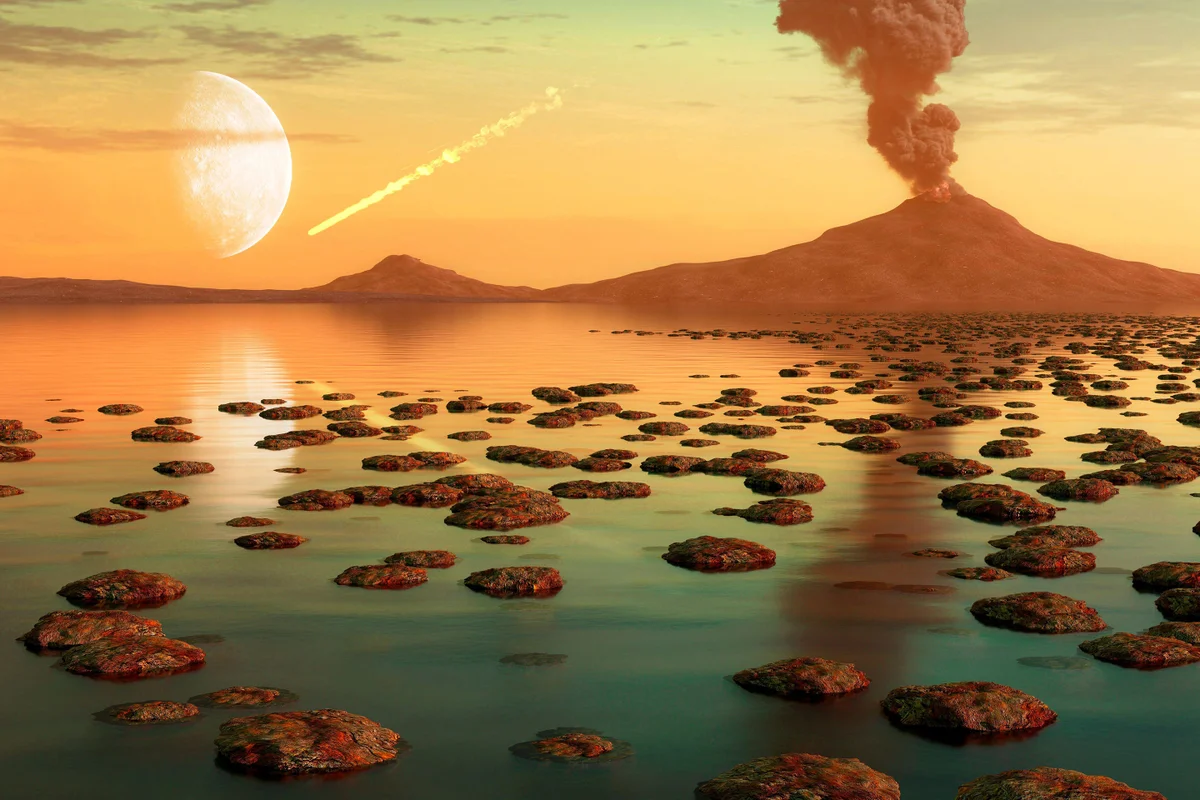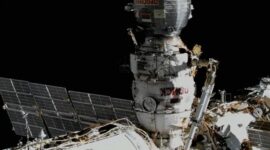07-11-2025
A groundbreaking geological discovery, announced today, is sending shockwaves through the scientific community, promising to fundamentally rewrite the long-held narrative of our planet’s violent birth. An international team of researchers has uncovered what they believe to be the first-ever tangible evidence of the primordial “proto-Earth”—the original planetary body that existed before a cataclysmic collision with a Mars-sized object named Theia, an event that is theorized to have created the Moon. This finding, hidden deep within our planet’s mantle, challenges the conventional wisdom that the Earth and Moon are products of a complete merger, suggesting instead that vestiges of our world’s original incarnation have survived for 4.5 billion years.
The research, published in the prestigious journal Nature Geoscience, centers on two massive, mysterious blobs of material buried deep within the Earth’s mantle, known as Large Low-Shear-Velocity Provinces (LLSVPs). These continent-sized anomalies, located beneath the African continent and the Pacific Ocean, have long puzzled seismologists. They are characterized by their ability to slow down seismic waves, indicating they are composed of material that is chemically distinct, and much denser, than the surrounding mantle rock. For decades, their origin remained one of geophysics’ greatest enigmas. The new study, led by geochemists and planetary scientists, provides a radical and compelling explanation: these blobs are the ancient, graveyard remains of the proto-Earth, a surviving shard of our world from a time before the Moon existed.
The dominant theory of the Moon’s formation, the Giant Impact Hypothesis, posits that in the chaotic early solar system, the proto-Earth was struck a glancing blow by Theia. This colossal impact vaporized and liquefied a significant portion of both bodies, hurling a disk of molten debris into orbit around our planet. This debris eventually coalesced to form the Moon. It was generally assumed that Theia and the proto-Earth, heated to incredible temperatures, would have completely homogenized, their materials mixing together to form the bulk of the modern Earth’s mantle and core. The discovery of these distinct, deep-mantle blobs shatters that assumption of complete mixing. The survival of these primordial zones suggests the impact was not a total blender, but rather an event that left behind preserved pockets of the original planetary architecture.
The key to this revolutionary claim lies in sophisticated new computer models of the impact’s geophysical aftermath. The research team ran high-resolution simulations that tracked the thermal and material evolution of both Theia and the proto-Earth following the collision. Their models revealed that while a large portion of Theia’s mantle did indeed mix with Earth’s to form the main bulk of the modern mantle, the intense energy of the impact could have also caused the iron-rich core of the Theia body to sink and assimilate with Earth’s core. Crucially, the simulations showed that dense, solid chunks of the proto-Earth’s mantle could have survived the impact intact, sinking to a region just above the core-mantle boundary where they have remained, largely undisturbed, for eons. The composition of these sunken parcels matches the unique seismic signatures of the LLSVPs perfectly.
Adding further weight to the model, scientists compared isotopic signatures. While Earth and Moon rocks are remarkably similar in their isotopic compositions—a long-standing puzzle in itself—the new theory offers an elegant solution. The material that formed the Moon came predominantly from the mixed mantle of Theia and the proto-Earth, explaining the similarity. The buried LLSVP blobs, however, represent a separate, isolated reservoir with a different chemical history. Dr. Eleanor Vance, the lead geochemist on the study from the University of Oxford, stated, “For decades, the isotopic similarity between Earth and the Moon was a major conundrum. Our findings resolve this. The Moon-forming material was a blended cocktail, while these deep mantle domains are like finding a pristine, unopened bottle of the original proto-Earth’s vintage. They have been sequestered from the rest of the mantle’s circulation, acting as a time capsule from a world that was thought to be utterly destroyed.”
The implications of this discovery are profound, extending far beyond a single revision of a textbook diagram. First, it provides a tangible, physical basis for the Giant Impact Hypothesis, moving it from a compelling model to a theory with direct, observable evidence within our own planet. Second, it suggests that the Earth’s interior is far more heterogeneous than previously believed, with “memory” of its violent origin still preserved in its deep chemical structure. This could explain certain volcanic phenomena, such as the unique geochemistry of lava from hotspots like Iceland and Hawaii, which may be tapping into these ancient, deep-seated reservoirs. Professor Kenji Tanaka, a planetary scientist from the University of Tokyo and a co-author of the study, emphasized the paradigm shift, saying, “We are no longer just looking at computer simulations of planetary formation. We have now likely identified the very material that built our world. This changes our perspective from Earth being a product of a single, homogenizing event to a planetary body that is a layered palimpsest, with its deepest history still written in stone at its core.”
In conclusion, the announcement made on this day, the 7th of November, 2025, marks a pivotal moment in planetary science. The identification of 4.5-billion-year-old traces of the proto-Earth within our planet’s deep mantle does not just add a footnote to the story of our origins; it rewrites the entire first chapter. It paints a picture of a more complex, less destructive genesis, where the ancient heart of our original world endured a cosmic catastrophe and continues to beat, hidden in the profound darkness near the Earth’s core, waiting for science to reveal its secrets.




